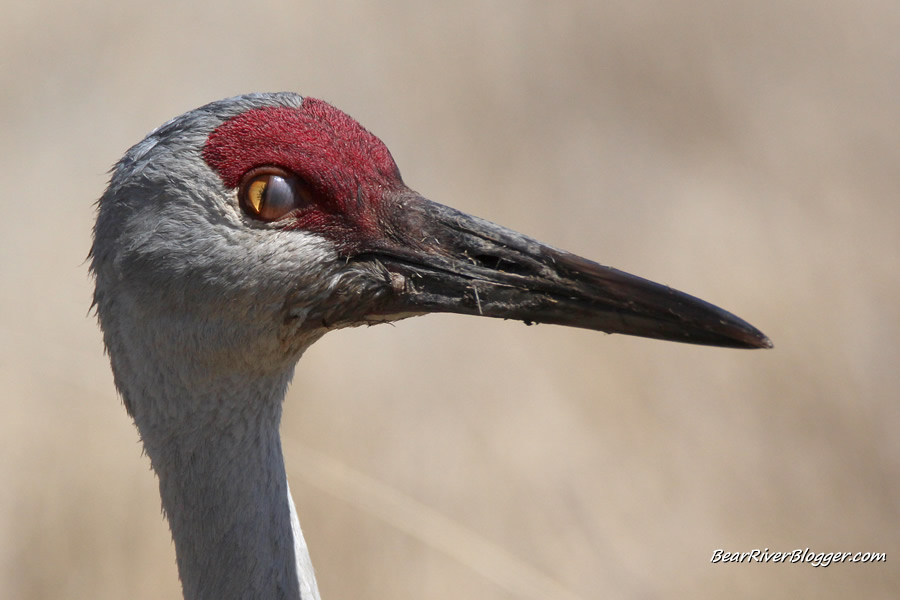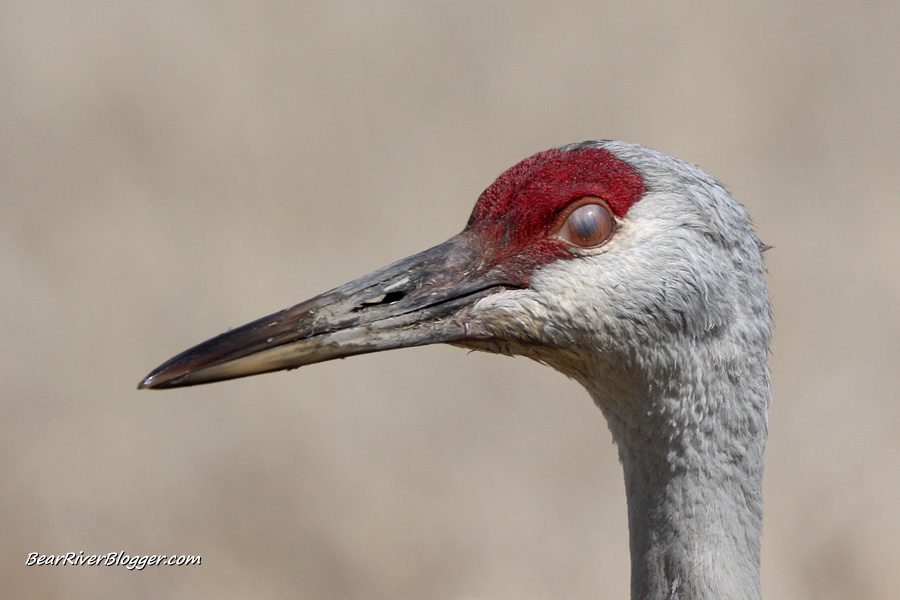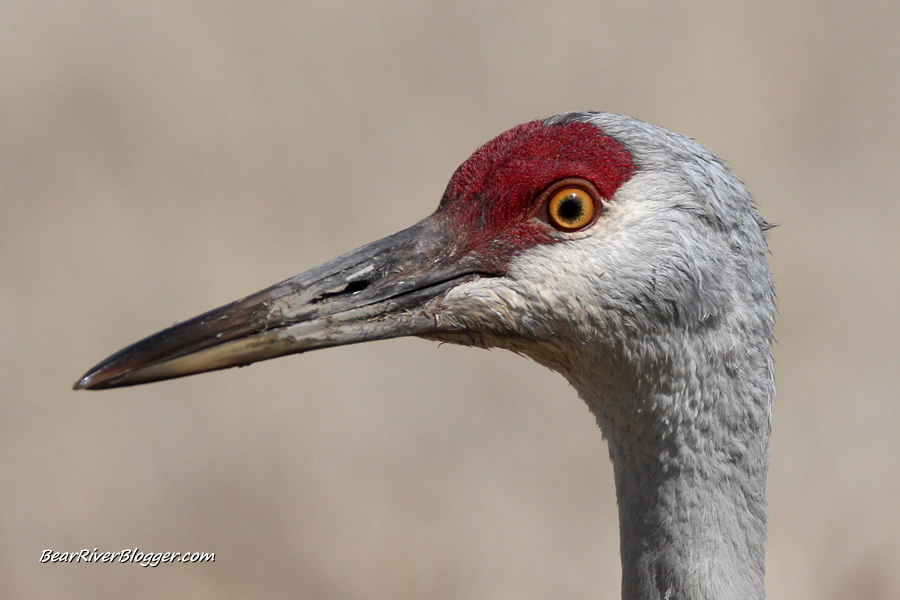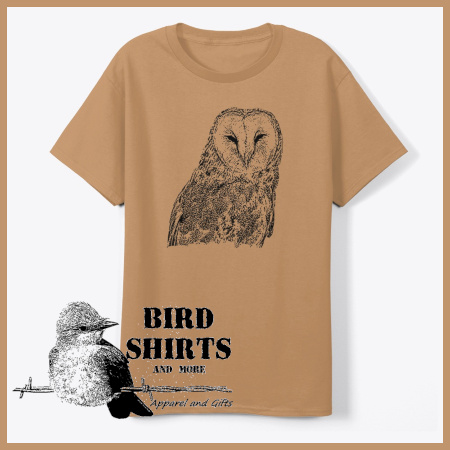Last week, when I was watching a pair of sandhill cranes feeding just a few short yards from the roadway at Farmington Bay WMA I was reminded of an interesting fact about birds regarding their eyelids.
I was so close to these sandhill cranes, less than 10 feet away at one point, that I could see their eyes plainly without magnification of any sort.
(Sandhill Cranes at Farmington Bay WMA.
Don’t forget to subscribe to our Bear River Blogger YouTube channel for short nature clips such as this as well as periodic updates about the Bear River Migratory Bird Refuge.)
But luckily, however, for this particular blog post, I had my camera ready to go right beside me and was able to take a few supporting images when the opportunity presented itself.
Simply put, birds actually have three eyelids, including both a lower and an upper one like us humans do as well as a third translucent inner eyelid, known as a nictitating membrane, that rests just beneath the other two eyelids and actually swipes sideways.

This third eyelid is mostly transparent and is used to both keep the eye moist as well as protect it from dirt and wind when flying and from debris when dunking or diving underwater.
Eyesight is everything to a bird with regards to flying, finding food, avoiding predators, and keeping their eyes from getting scratched, dirty, or injured is critical to their survival.
If you’ve ever been on a motorcycle or stuck your head out the window of a moving car, you probably have had a piece of dirt or a bug or two hit you in the eye.
That’s what birds have to deal with each and every day so the third eyelid, or nictitating membrane if you want to get technical, is a protective goggle of sorts for birds.
Some birds, such as grebes and diver ducks, for example, that swim under the water in search of food also have small pieces of water-borne debris get in their eyes so the nictitating membrane is nothing more than a pair of safety goggles birds can use to protect their eyesight both during flight and underwater.

So next time you get to see a bird up close, look for the nictitating membrane that covers the cornea from side to side.
All birds have a third eyelid but unless you pay close attention and watch the eyes for a period of time, you might miss when it is actually covering the eye if the bird is just casually feeding or resting like the sandhill cranes were the other day.
Each time the nictitating membrane was covering their eyes was only for a second or two, but it happened numerous times during the 15 minutes or more I was observing the sandhill cranes that I was able to capture the third eyelid with my camera a few times.
Bird T-shirts
Western Meadowlark T-shirt, available in a variety of colors and styles. Visit our online store for more information or to make a purchase, and use coupon code save20 for 20% off all our products for a limited time.
Every purchase you make helps keep this website going and we appreciate your support for our time and effort in blogging about nature on and off of the Bear River Migratory Bird Refuge.

Subscribe To Bear River Blogger
Don’t forget to head on over to our subscribe page and sign up for email notifications for future blog posts.
We appreciate your support for our website and also offer you to follow us on our YouTube channel where we occasionally upload short videos updates about the Bear River Migratory Bird Refuge and small nature clips when we can capture them on film.



